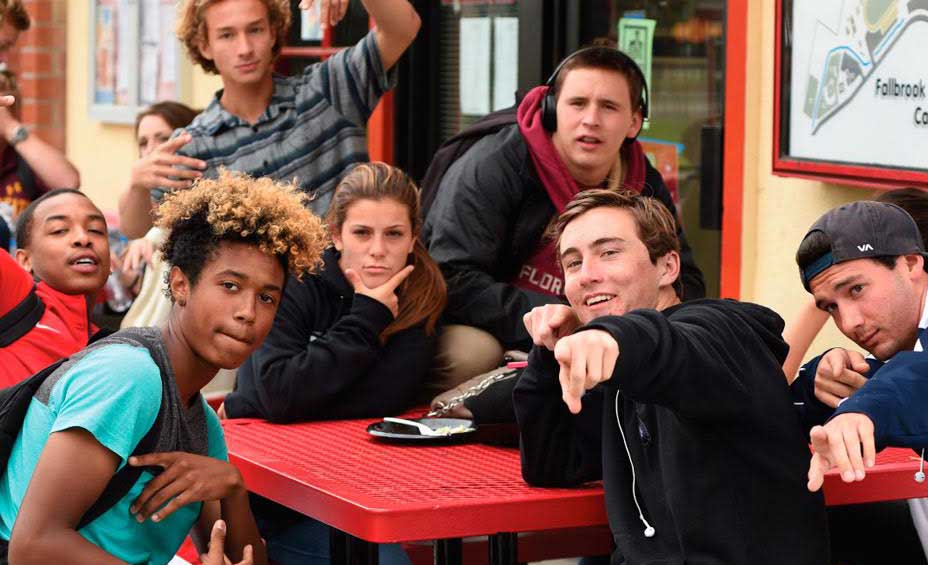Sponsored by SkoolLive
It will come as no surprise that Gen Z is the future of the restaurant industry, but what many owners and operators don’t know is that this generation already holds significant buying power and can no longer be ignored.
“Gen Z already represents 30 percent of the entire U.S. population, and by 2020 will represent 40 percent,” says George Bruton, CEO of SkoolLive. “U.S. teens currently spend $258 billion a year, and if you divide that out, that’s roughly $9,600 teenagers have to spend on food and items they want.”
Without rent, and other living expenses, the bulk of this money is expendable and can be used on food, clothing, and other wants. In addition to choosing where to spend their own money, brands that reach teenagers can also help convert their parents into loyal customers. Teens influence over 70 percent of the family food choices, Bruton says.
“A lot of businesses, especially local and regional businesses, don’t think kids have much influence and buying power,” he says. “But when Friday night comes and mom and dad don’t want to make dinner, they ask what their kids want. All the data coming out shows the persuasive power that this market carries.”
But Gen Z is unlike the other generations that come before them. Born into a world of technology, capturing this elusive group can be a challenge. Here are some ways restaurants can reach younger consumers:
1. Get High-Tech
Today, technology influences every aspect of teen lives, so high-tech strategies are good ways to reach these consumers.
“The world they’ve grown up in is all technology, all mobile, all interactive campaigns, and interactive engagement with themselves,” Bruton says. “They want to access this information and to be engaged and appreciated, and they want it to happen in a fast period of time.”
Investing in outreach that effectively uses technology is critical for reaching this generation. A successful platform will meet teens on many different levels and offer social media, apps, and digital messaging so restaurants can better engage teenagers and begin building relationships.
2. Talk With Them
Once you reach this audience, the challenge is to engage teens with your message quickly. Having lived their whole lives in an instant world, competition for the attention of young people is much harder than it once was.
“The average attention span for Gen Z is 8 seconds and is not as long as it was in previous generations, which responded well to commercials or television and magazines,” Bruton says.
But just because their attention spans are shorter doesn’t mean that engaging teens is impossible. The trick is to start conversations, rather than relying on traditional advertising. “Teenagers want to be talked to in a two-way conversation,” Bruton says. “They want to be asked their opinion and be part of the conversation.”
Offering teens opportunities to speak back to brands is a great way to keep their attention. Gen Z is loyal to companies that care about their opinions, so don’t be afraid to ask about their experiences or to try unique outreach methods.
3. Sell Them on the Brand, Not Food
Of course the restaurant industry wants to sell food to consumers, but the way to Gen Z’s heart may be by giving these consumers more than meal discounts. Brands that focus on the generation’s desire for bright, successful futures are able to foster stronger relationships with this group.
“One of our partners is McDonald’s, and instead of just putting out a coupon for a double cheeseburger, they share hiring opportunities at a local restaurant and explain their college financial aid programs,” Bruton says. “It’s about saying, ‘we want you to engage with our brand, and we want to offer you opportunities’.”
In these ads, McDonald’s doesn’t even mention burgers and fries. Red Robin uses a similar strategy and, rather than trying to sell a specific product, sells teens on the fact that a percentage of their checks goes toward school clubs to fund the events and activities they love. These brands want students to understand that they can help students find employment and funding opportunities, and as a result, reach students on a deeper level.
This strategy also works on a local level, as smaller brands can partner with school fundraising events to help tackle issues that students and faculty care about. By hosting a pancake breakfast to raise money for a cause, for example, restaurants can become part of the school community and earn the trust of these consumers.
4. Find a Partner That Can Reach Them Where They Are
Even the best messages are only successful if the audience sees them. Some brands are finding success by placing messages where teenagers are—schools. By placing messaging in schools where students already are, they are far more likely to interact and engage.
But placing messaging inside schools can be tough and requires a partner that can not only use technology on campus, but knows how to make that technology a daily destination for informative, interesting, and engaging content that positively inspires and excites youth culture.
“Put your messages where [teens] will see and interact with them,” says Ed Andrew, COO at SkoolLive. “You don’t just simply install monitors on a school’s campus and just have everything self-ignite and become successful.”
A good partner can help you assess the best ways to get your message out, where messages should be located, and can foster relationships with schools.
Though members of Generation Z are young, they are on track to become the biggest group of consumers in the history of the U.S. But successful businesses cannot simply wait for Gen Z to grow up.
“People think teenagers don’t have money and don’t tell mom and dad what they want, but they are significantly engaged,” Bruton says. “The money they receive from family and jobs is expendable. They can use it on going out every Friday, Saturday, and Sunday.”
By Peggy Carouthers
About SkoolLive:













